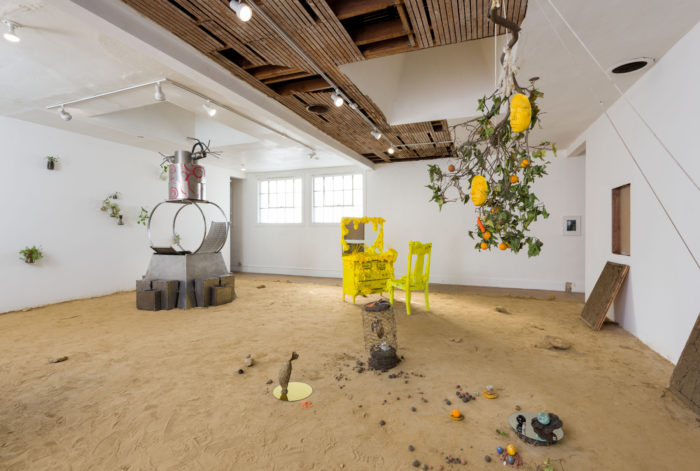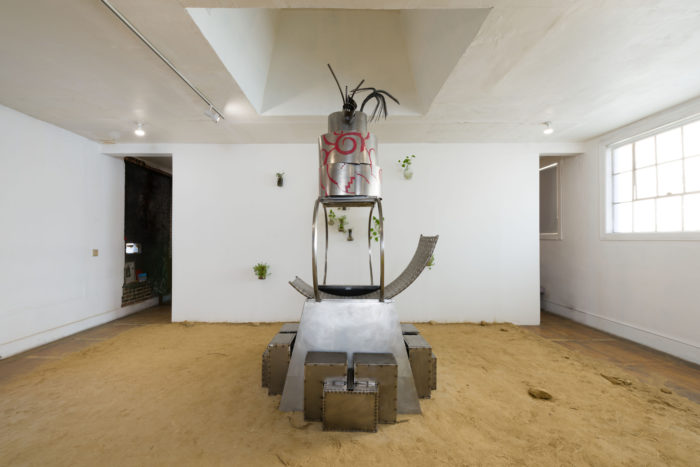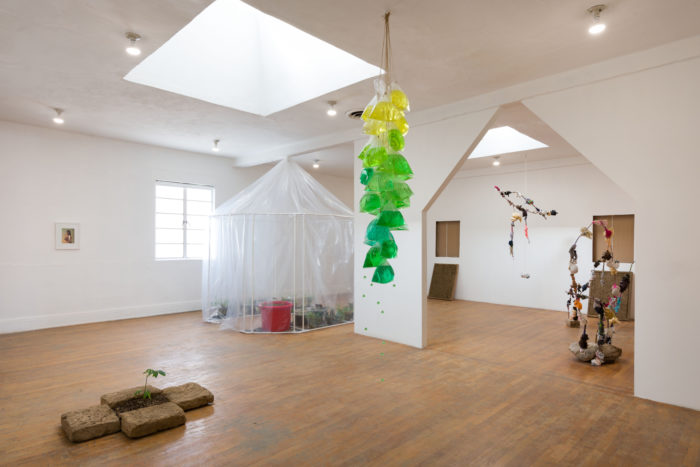Tiempo de lectura: 2 minutos

03.03.2018
Commonwealth and Council, Los Angeles, USA
20 de enero de 2018 – 3 de marzo de 2018



Commonwealth and Council presents Pasado mañana, an exhibition of new work by Beatriz Cortez and Rafa Esparza. Together, they posit immigrant labor as a foundation for building a future in which multiple imaginaries of gender, race, class, and culture become possible. “Pasado mañana,” Spanish for “the day after tomorrow,” translates literally as “when tomorrow has passed.” Cortez and Esparza stage the potential inherent to this special temporality—anchored in the future perfect tense and all its poetic implications—where a collective, nomadic subjectivity is not only imaginable but flourishes. This is their third collaborative exploration of this futurity, following exhibitions at UCR ARTSblock and Ballroom Marfa earlier this year.
Multiplicity of time and space recurs throughout Cortez’s practice, which navigates the simultaneity of immigrant experience as a truly critical nexus, with its differing and often competing versions of modernity, urbanity, technology, and culture. For Cortez, the spaceship provides what time machines and fortune tellers have elsewhere: a protective clairvoyance through which to chart and better understand what could otherwise become an intractable state of cognitive dissonance. The development of formal and spatial practices adequate to the experience of simultaneity grounds the exhibition. Esparza mounts a complex intervention in the gallery’s architecture, partially replacing, partially reinforcing its white walls and wooden floors with adobe—a material process deeply imbued with its own time and history. Both content and context, this reconstructive gesture constitutes a tableau of historical and personal meaning, an act of radical affirmation, and a platform for expansive engagement. For these adobe walls, Esparza has invited six queer artists (Fabián Guerrero, Sebastián Hernández, María Maea, Rubén Rodríguez, Gabriela Ruiz, and Brenzy Solorzano) of the next generation to show work alongside portraits he has painted of them, engaging in an artistic dialogue with these artists who exist in the present, but tell of the future.
Water lilies grow there. The system engineered for their cultivation in the gallery complicates this «future perfect,» introducing a circular idea of time that includes preserving ancient knowledge in generosity toward futures not yet imagined, despite the colonial obstacles that must be overcome for this gift to survive. The Mayan king Pakal wore water lilies in his headdress—symbolizing the rivers, streams, and waterfalls that would run in his kingdom, but also its technological advances in the field of agriculture. The labor of cultivating nature, so instrumental for the Maya in working the earth to build monumental precincts of spiritual depth and aesthetic pleasure, continues to underlie the immigrant experience. Immigrant gardeners, all over Los Angeles, put into practice different forms of ancient and contemporary knowledge and labor. As in their previous collaboration, “Nomad 13,” Cortez and Esparza are also gardeners here. Their combined labor nurtures these flowers—brimming with aspirations, ancient history, and commercial and aesthetic value—to thrive in circumstances of their choosing.
www.commonwealthandcouncil.com
Comentarios
No hay comentarios disponibles.